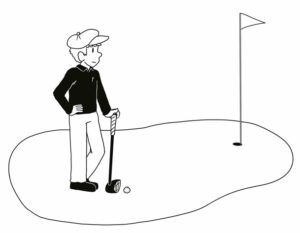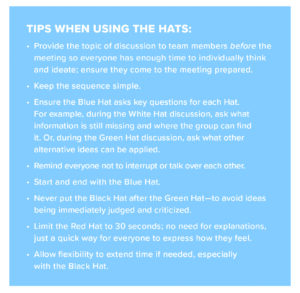
By Dr. Dave Oventhal
Subaru of New England, Professor of Automotive Strategy
Director, CAMS Research Institute
Northwood University
Midland, Michigan
doventhal@gmail.com
Corralling the Cats
Sarah, senior manager of consumer insights for a global consumer electronics company, was planning an upcoming research trip—a multiday whirlwind visiting retailers in four states with two focus groups each night. She was excited that representatives from design, engineering, and product would attend, but she was already stressed about the wrap-up meetings.
After each evening’s focus groups, everyone would review notes and prepare for the next day’s retail visits. The team would be visiting multiple retail outlets during the day and conducting several focus groups each night. Unfortunately, these wrap-ups typically turned into arguments, and the team would get back to the hotel around 2:00 a.m. This resulted in a grumpy group the next morning as everyone rushed to get to the first retailer. Sarah needed to figure out a new way to make these wrap-up meetings more efficient.
Sarah picked up a book from her desk. Her boss dropped it off after the last research trip and suggested it might help. Deborah, Sarah’s vice president, said the book offered a great tool that could streamline meetings. The tool was called the Six Thinking Hats (Hats) and was based on participants working together to holistically review a topic in a short amount of time and utilize diverse perspectives for the best decisions and ideas.
The Hats were based on the author’s Parallel Thinking theory. Developed by Dr. Edward de Bono, Parallel Thinking avoids arguments and conflict by using a structured and disciplined method to organize the discussion. Parallel Thinking overcomes several issues in typical meetings:
- Participants talking over one another

- People jumping from one idea-to-another
- The meeting becomes chaotic
- The most opinionated or loudest person—or the one with the most impressive title—dominates the discussion or pushes their personal agenda
Sarah decided to read the book and hoped it could help. She had to figure out a way to keep the wrap-up meetings short and focused. No one liked sitting in a focus group room all night, let alone into the early morning.
Put On Your Thinking Hat
Kaizen: continuous improvement. Retrospectives: after-action reviews. Both are methods to learn and improve—typically after a project is completed. Software development teams use post-sprint retrospectives on a regular basis, but how often do research teams use systematic methods when planning a research study, reviewing an ongoing study, or after a project is completed? Unfortunately, most research teams do not conduct a formal, structured, and regular analysis to continuously improve and innovate research processes, activities, and projects.
 As Sarah is about to learn, the Six Thinking Hats is a great tool that provides a structured, time-constrained review of a topic. Using the Hats before, during, and after a research project ensures team members work together for ongoing analysis, improvement, and innovation. Systematic use of the Hats is of particular value in the following circumstances:
As Sarah is about to learn, the Six Thinking Hats is a great tool that provides a structured, time-constrained review of a topic. Using the Hats before, during, and after a research project ensures team members work together for ongoing analysis, improvement, and innovation. Systematic use of the Hats is of particular value in the following circumstances:
- When a subject needs to be discussed thoroughly
- When those taking part in the thinking have strongly held and different views
- When there is a rambling discussion that is not getting anywhere
If you want a tool to holistically review a topic in a short amount of time with diverse perspectives and everyone working in parallel, try the Hats; you will never go back to an unstructured review session or brainstorming event.
What are the Six Thinking Hats?
The Hats are six colored symbolic “thinking hats,” each representing a different thinking mode. The benefit of the Hats is to separate each thinking mode for a more focused discussion. Colored hats are used as metaphors for each thinking mode. Switching thinking modes is symbolized by the act of taking off and putting on a different colored hat, either literally or metaphorically. Envision “putting on your thinking cap,” then physically switching colored hats. By mentally wearing and switching hats, it is easy to focus or redirect thoughts, the conversation, or the meeting. The saying, “put your thinking cap on,” was the inspiration for the name.
separate each thinking mode for a more focused discussion. Colored hats are used as metaphors for each thinking mode. Switching thinking modes is symbolized by the act of taking off and putting on a different colored hat, either literally or metaphorically. Envision “putting on your thinking cap,” then physically switching colored hats. By mentally wearing and switching hats, it is easy to focus or redirect thoughts, the conversation, or the meeting. The saying, “put your thinking cap on,” was the inspiration for the name.
These metaphors allow for a more complete and elaborate segregation of the thinking modes. The Hats force an individual or group to look at all perspectives of a topic: weaknesses, concerns, benefits, problems, evidence, and emotions. Also, the Hats ensure a thorough review of a topic through a systematic process and the discipline of time. Meeting times can be significantly reduced when using the Hats due to the structured process and limited time per thinking mode.
Use each Hat for one specific thinking mode and use one Hat at a time; do not jump from one Hat to another in a random, unstructured way. The power of the Hats is to focus on one thinking mode before moving to the next, allowing participants to separate thinking into six clear functions and roles to avoid multitasking and jumping from one topic to another. Think of the Hats as tools used for specific applications. For example, you would not use a driver when on the putting green; a putter is the proper tool for that job.
How to Use the Six Thinking Hats?
The Hats can be used by individuals or groups. Individuals can use the Hats to organize their thinking in preparation for a meeting, to review a topic holistically, or to improve focus. With groups, a Hats session can be organized into three possible sequences. However, it is recommended to use the fixed sequence until gaining enough experience using the Hats. A fixed sequence is easier to control, prevents the discussion from wandering, and ensures a strict adherence to time.
- Fixed: Blue Hat sets the sequence.
- Contingent/Flexible: The Blue Hat sets the sequence but adjusts as needed.
- Evolving: No set sequence is planned; the sequence evolves during the meeting.
The person with the most Hats’ experience takes the role of the Blue Hat. Think of the Blue Hat as the meeting facilitator, traffic cop, or orchestra conductor. The Blue Hat chooses the topic, creates the sequence and timing, and facilitates the meeting, ensuring everyone plays by the rules.
Everyone else is a participant and follows the sequence order and the Blue Hat’s directions. As the group moves through the sequence, one Hat is discussed in a specific amount of time, then the group moves to the next Hat (i.e., thinking mode) until the sequence is complete.

Case Study: Real World Application
Sarah read the book on the plane and sketched a plan for the wrap-up meetings. She was sure the Hats could solve her problems—keeping the team focused and following the “rules.”
Sarah and her research team finished a long day of retail visits and focus groups. It was 11 p.m. and they had to be at a local retailer at 9 a.m. Everyone was exhausted and wanted to go back to the hotel. While the participant feedback was still fresh, the team needed to conduct a recap. Sarah had to keep everyone focused. The Hats were the best tool to quickly conduct a thorough wrap-up, and she was excited to ensure the meeting was focused and efficient. Sarah used the following plan to guide the wrap-up meeting.
In approximately 30 minutes, the team quickly reviewed many hours of research and returned to the hotel by midnight. The sequence allowed the team to thoroughly review and make changes for the next day’s research. The short amount of time per Hat ensured an effective and efficient analysis of the day’s research.
 Challenges of the Six Thinking Hats
Challenges of the Six Thinking Hats
The Hat’s main challenge is keeping participants focused and working in parallel. Typically, participants will jump to another Hat to share a thought. It is important that the person “wearing” the Blue Hat directs everyone back to the Hat being discussed (when someone goes off topic). This is the power of parallel thinking—avoiding counterproductive multitasking and a lack of focus.
The following are several ways to keep a participant focused on the specific Hat:
- Gently remind them that their comment is another Hat topic, and to please hold off until that Hat is reviewed.
- Gently remind the person that they are not following the rules of the game. If the person continues to interrupt and share thoughts from another Hat, remind them that if they do not play by the rules, they can take notes. This typically puts them in their place without being too confrontational. If they continue to interrupt, you can ask them to leave.

Benefits of the Six Thinking Hats
The following are several benefits of the Hats:
- Easy-to-learn and use: can be positioned as a game; play by the rules and it works.
- Separate thinking: do one thing at a time; avoid multitasking.
- Extreme efficiency (i.e., shortened meeting times): everyone is focused, and the discussion is kept moving; the structure ensures the group does not jump from one idea to another.
- Holistic review of a topic: includes all thinking modes, balanced thinking (e.g., positives, negatives, feelings, new ideas).
- Full participation: the Blue Hat ensures everyone participates and all points of view are discussed.
- Shares emotions (Red Hat): emotions are a key driver for decisions—it is important to allow everyone a chance to express their feelings.
- Reduces confrontation: ensures no one talks over each other and everyone explores the subject in parallel (avoids arguments and disagreements to allow all points of view).
- Generates new ideas (Green Hat): specific time forcreativity, develop alternative ideas.
Conclusion
The Hats are a great way to explore a topic in a disciplined, systematic, and time-constrained manner. This powerful tool ensures everyone focuses on a single thinking mode, rather than jumping from idea-to-idea in a haphazard way. The Hats also avoid one person dominating the discussion, allowing all sides to be heard. Holistically reviewing a topic in a short amount of time overcomes the weaknesses of unstructured meetings and most brainstorming sessions.
The Hats are a great tool to help ensure your research continually improves, team members participate in the success of the project, and new innovative ideas are leveraged. The Hats are also useful when developing a research summary to incorporate new, innovative ways to communicate insights beyond (boring?) reports or PowerPoint presentations. As a qualitative researcher, the ability to continually improve and innovate your practice will keep the research fun and exciting for both team members and participants.
REFERENCES
de Bono, E. (1994). Parallel thinking: From Edward de Bono’s mind to the market. Viking.
de Bono, E. (1985). Six thinking hats. Little, Brown, and Company.
Oventhal, D. (2021). Rethink how you think: Creative problem solving for product management. Product Management Press.





